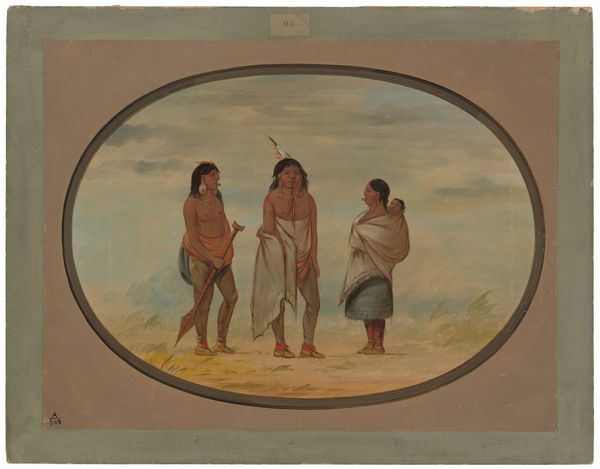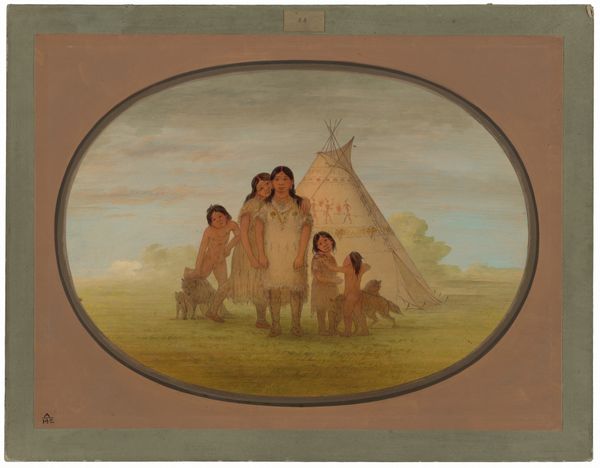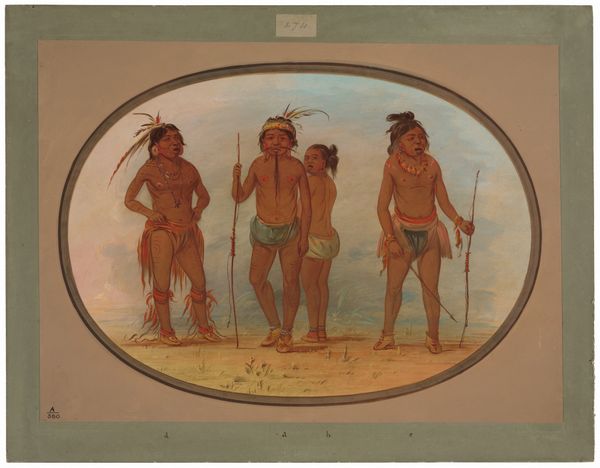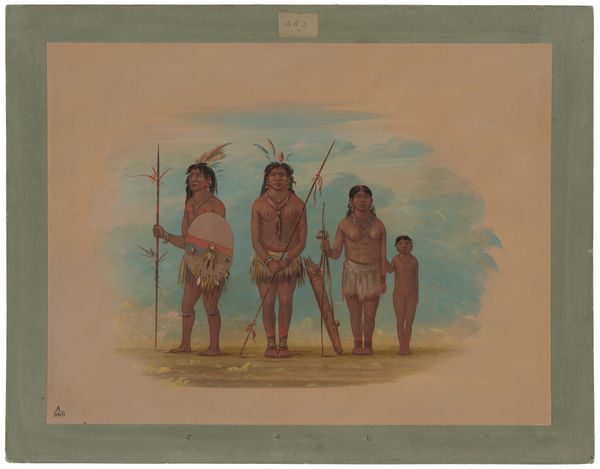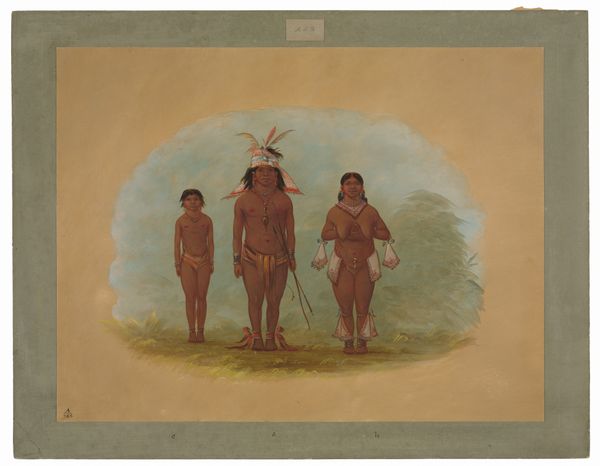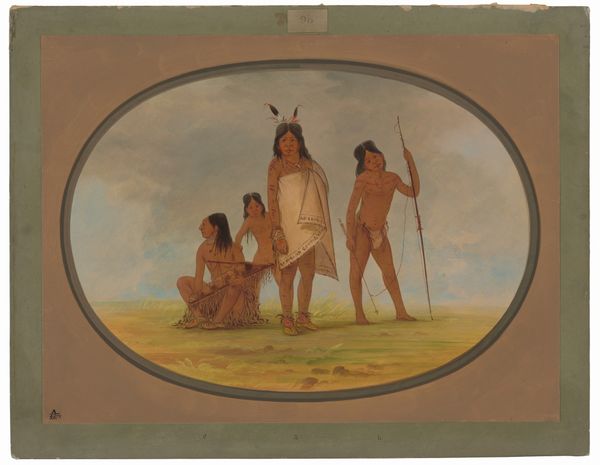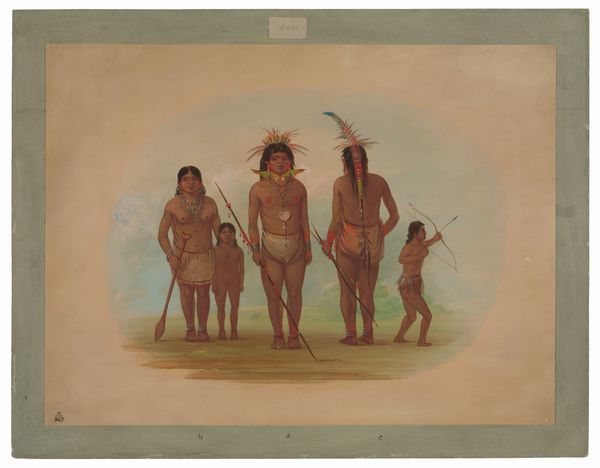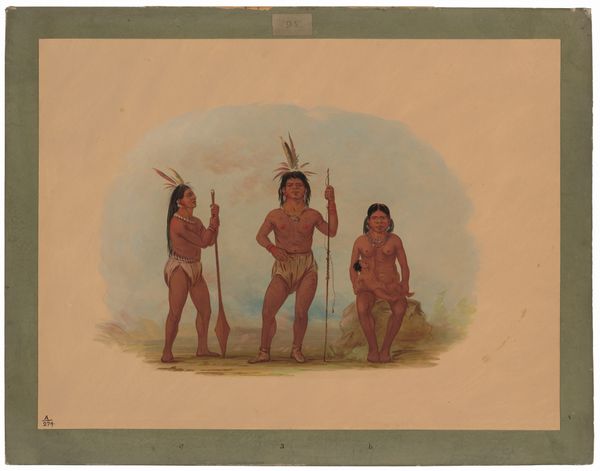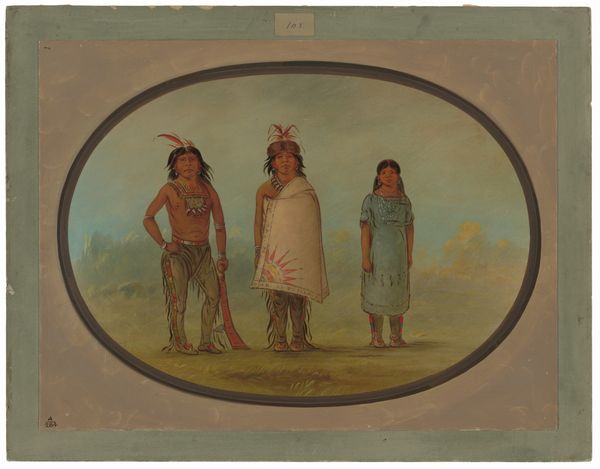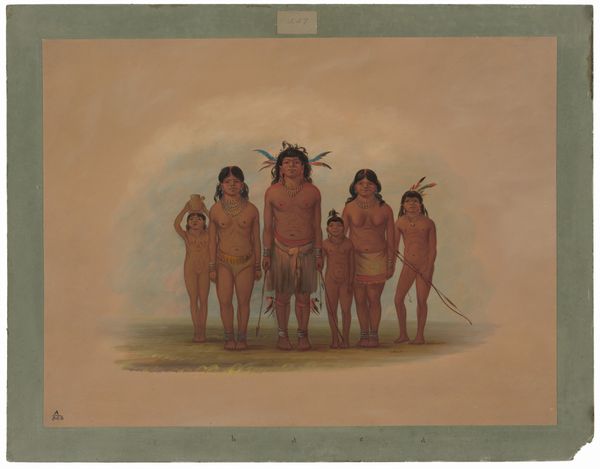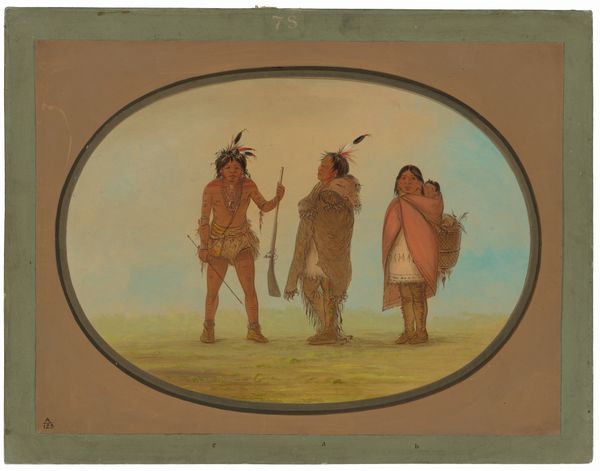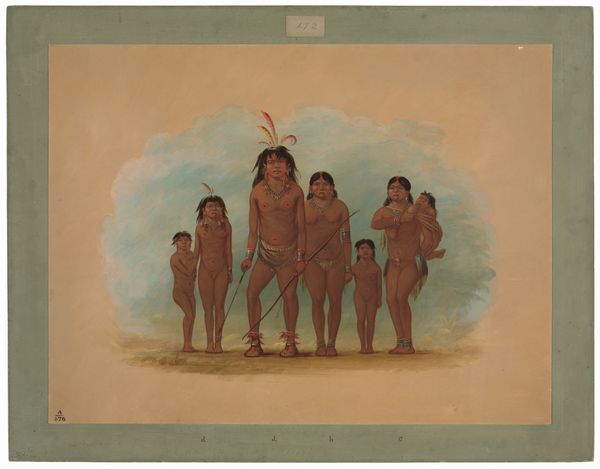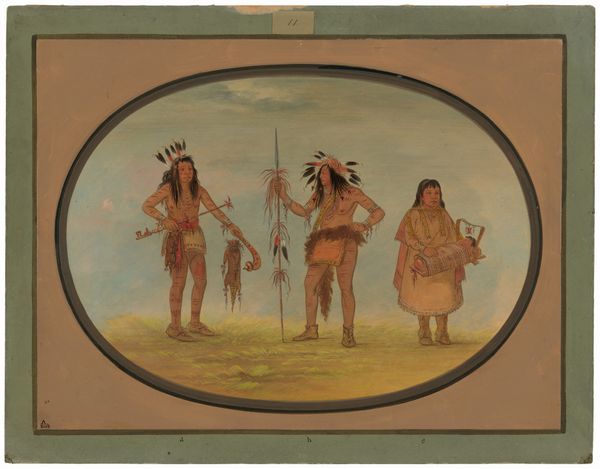
painting
#
portrait
#
water colours
#
painting
#
indigenous-americas
Dimensions: overall: 46.5 x 62.4 cm (18 5/16 x 24 9/16 in.)
Copyright: National Gallery of Art: CC0 1.0
Curator: Looking at this artwork, my initial feeling is one of curious stillness. There's a sense of posed formality mixed with something more intimate and perhaps, vulnerable. Editor: We're standing before George Catlin's "Five Maya Indians," a watercolor created sometime between 1855 and 1869. Catlin is known for his depictions of Native Americans, but this work complicates easy narratives of documentation. Curator: Precisely. We have to unpack Catlin’s role. Was he observing, or appropriating? The romanticized presentation feels very much filtered through a Western gaze, especially regarding how Indigenous people are often exoticized. How much agency did the sitters truly have in this representation? Editor: The "romanticism" tag here raises significant issues. Catlin exhibited and profited from these images. Viewing it through today's lens, we can question if these paintings became commodities in a broader discourse that justified dispossession. The crumbling architectural element feels symbolic in retrospect. Curator: It highlights that precarious tension between observation and exploitation. Who gets to control the narrative? The individuals portrayed have little to no documented voice, leaving us reliant on Catlin's interpretation and agenda, which can create an unbalanced dialogue with today’s sociopolitical understanding. Editor: We must consider this from an institutional viewpoint too: How did museums and galleries present such works during Catlin's time, and how do we contend with their legacy now? Did they serve as genuine representations, or contribute to an idealized, even fabricated, narrative for the colonizers? Curator: And does showing it now perpetuate harmful ideas? If so, how can these romantic images encourage us to adopt an intersectional framework through an examination of the complex intersections of Indigenous identities and colonialism? The piece has artistic value, but social and political ramifications we need to engage with actively. Editor: Absolutely, viewing such works involves acknowledging their troubled histories, fostering respectful discourse that re-centers Indigenous perspectives rather than perpetuate dominant societal narratives, allowing the conversation to continuously shift away from historical oppression. Curator: It serves as a harsh reminder of the art world's entanglements with colonialism and the critical role of continuously evaluating and contextualizing its representations to address inequalities.
Comments
No comments
Be the first to comment and join the conversation on the ultimate creative platform.
